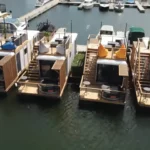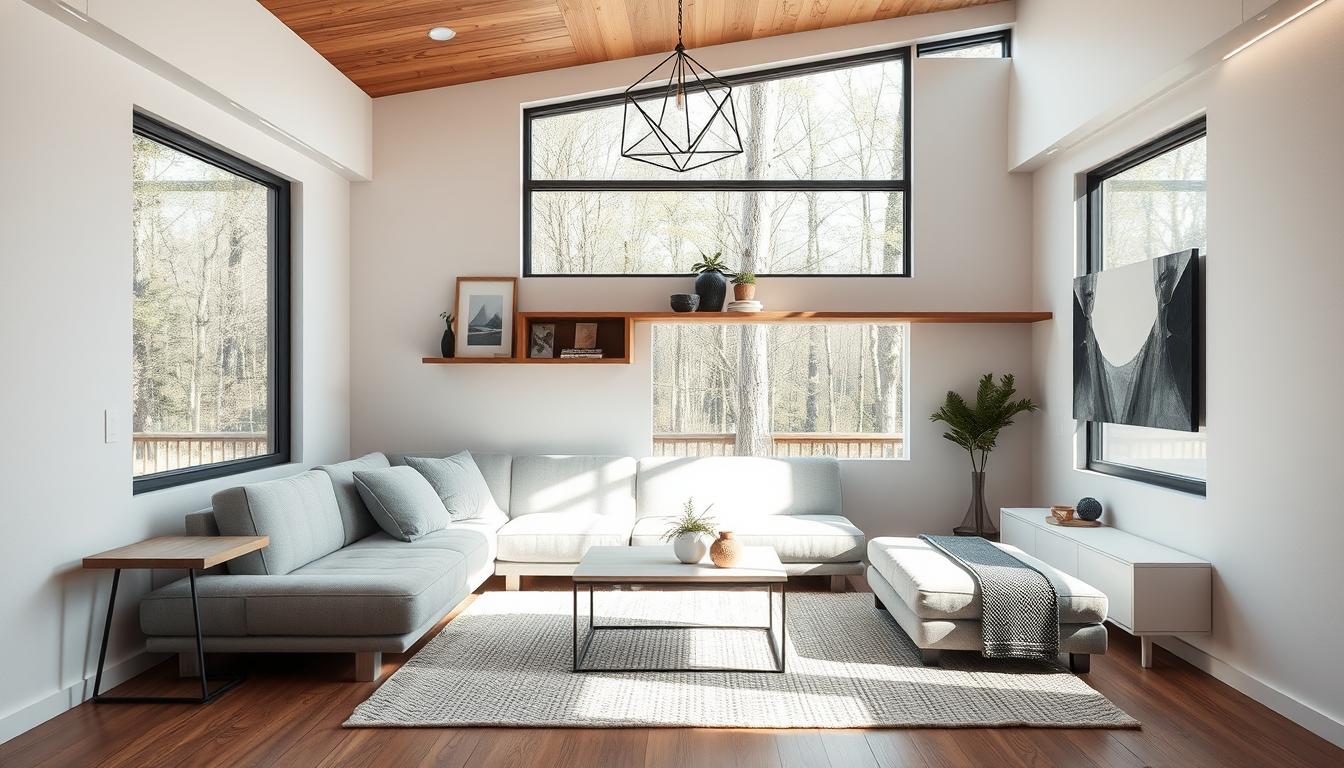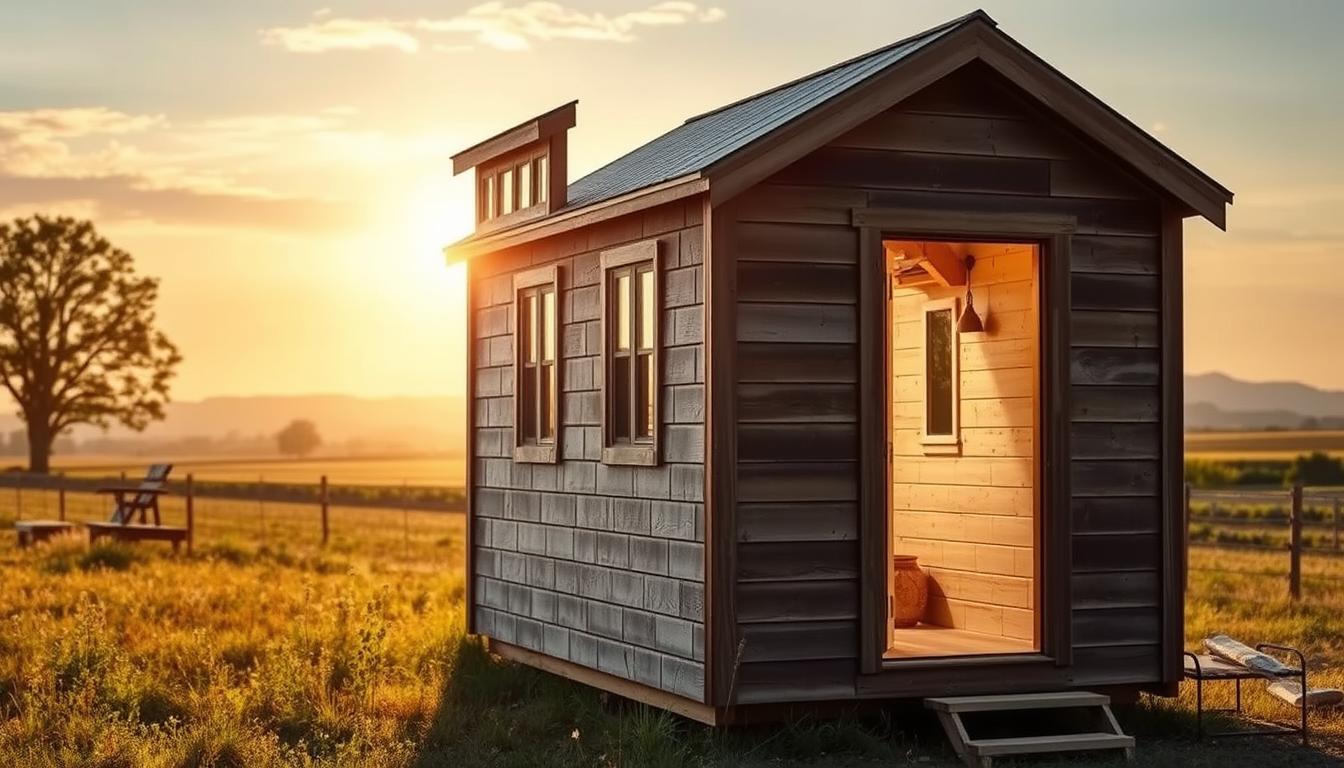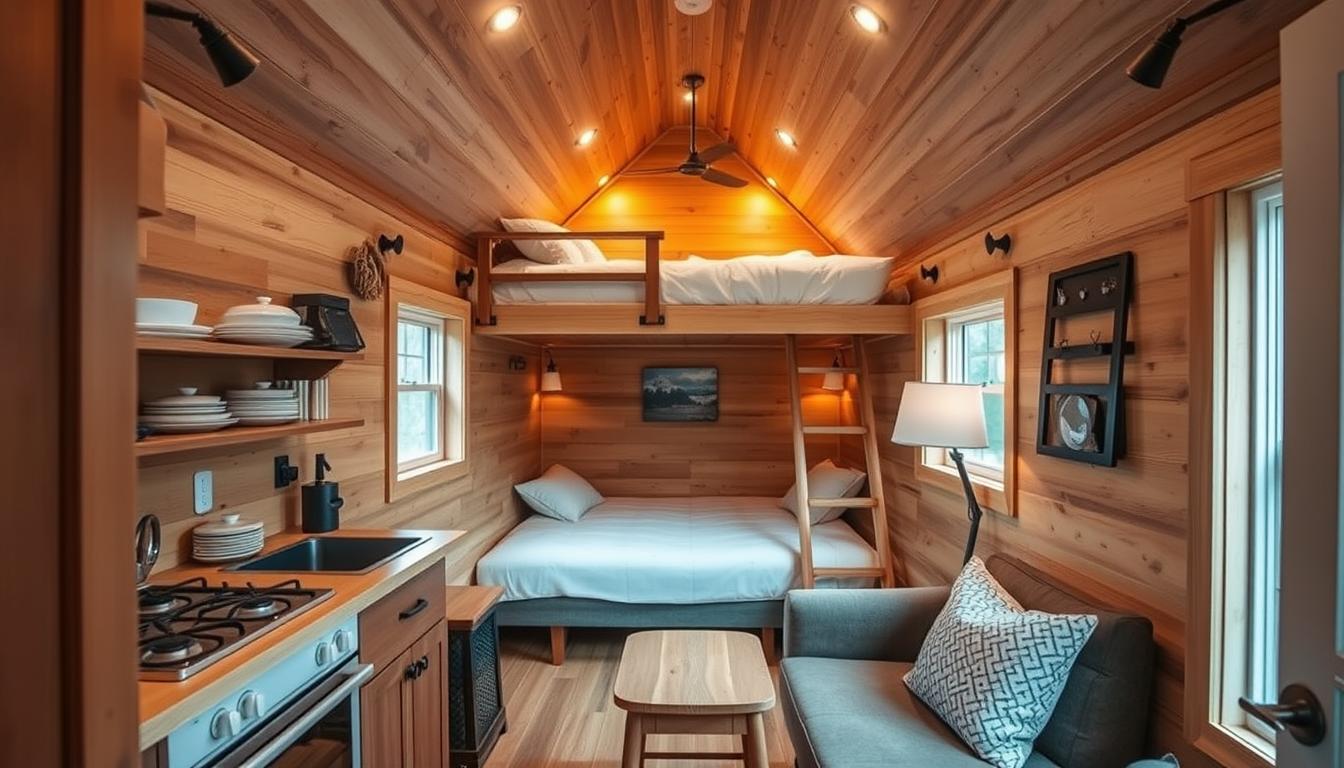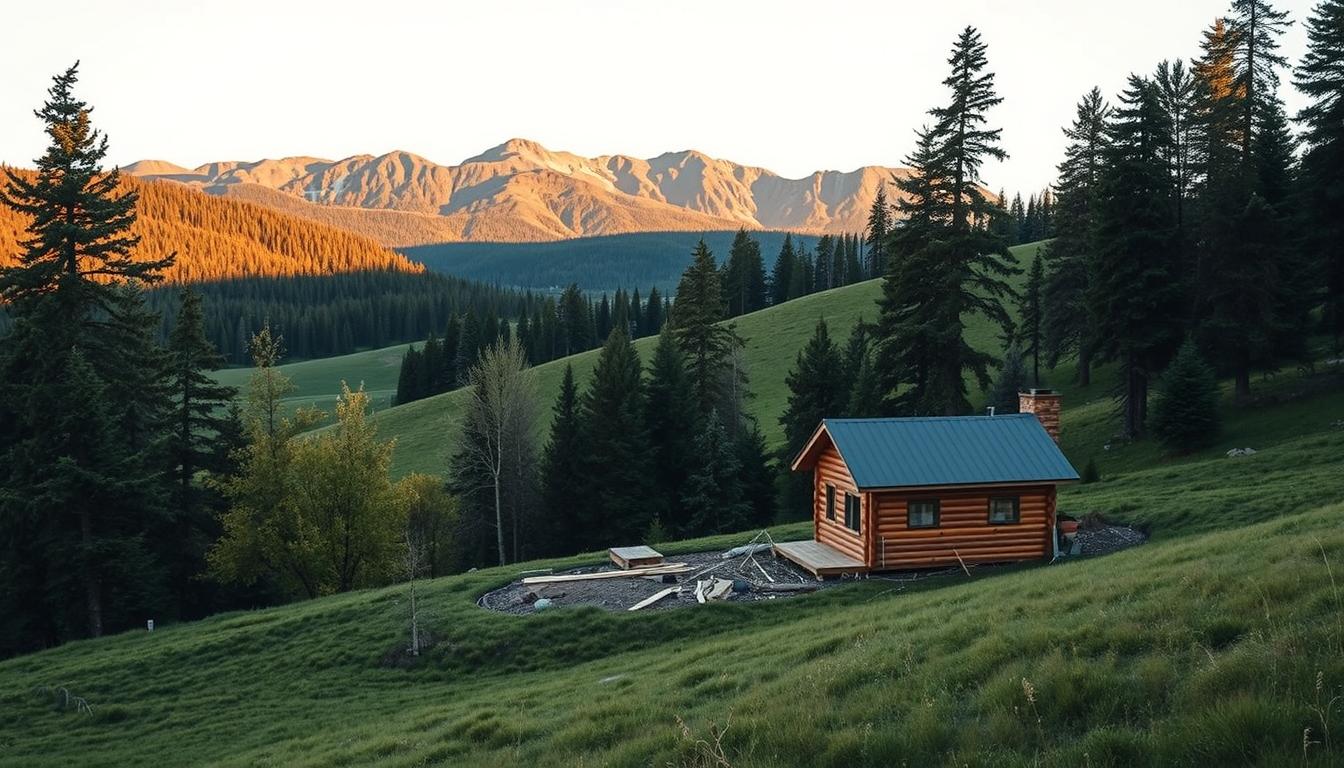Stunning Location
Nestled along the picturesque Marina in Montreal, Quebec lies a unique and stylish floating tiny house that is creating ripples of excitement among those who have had the opportunity to experience it.
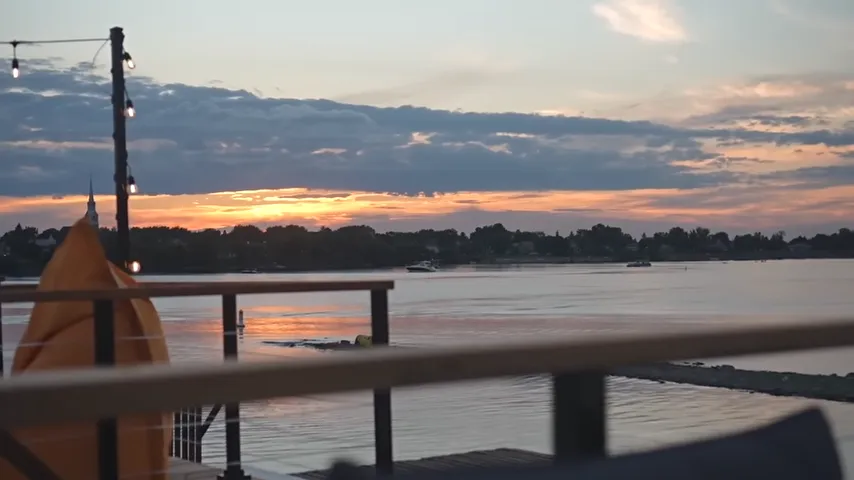
The 200 square-foot home, designed and constructed with love by Bow House Habitat, offers the perfect blend of comfort and innovation, making it the ideal getaway for those looking to escape the hustle and bustle of city life.
The Deck
As I stepped onto the deck of this modern marvel, I couldn’t help but feel a sense of awe wash over me. The float home, aptly named Ovilla, is a part of a pilot project that aims to offer people the chance to experience life on the water. The moment you step inside, it’s evident that every detail has been meticulously crafted to make you feel at home.
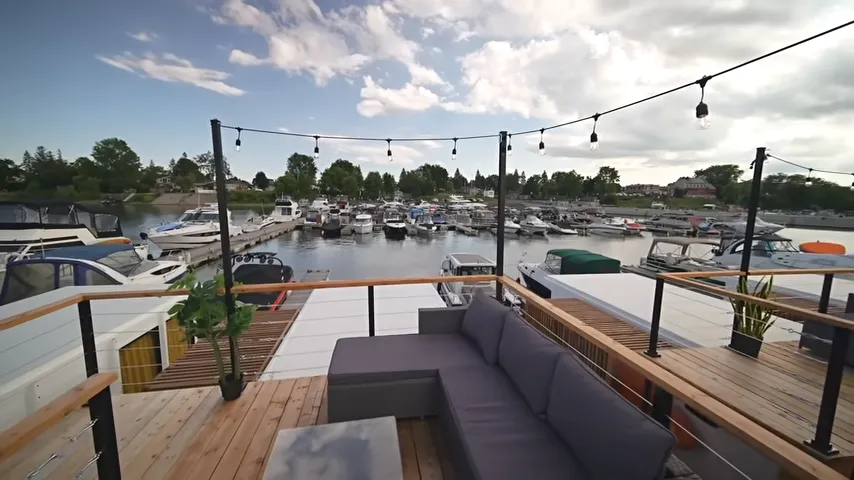
Living Room
The living room, complete with a smart TV and sound bar, is the perfect spot to unwind and take in the breathtaking views of the water. The air conditioning and heater integrated into the walls ensure that you can stay comfortable all year round. The house is also well-insulated, thanks to the fiberglass and foam walls, which help regulate temperature fluctuations.
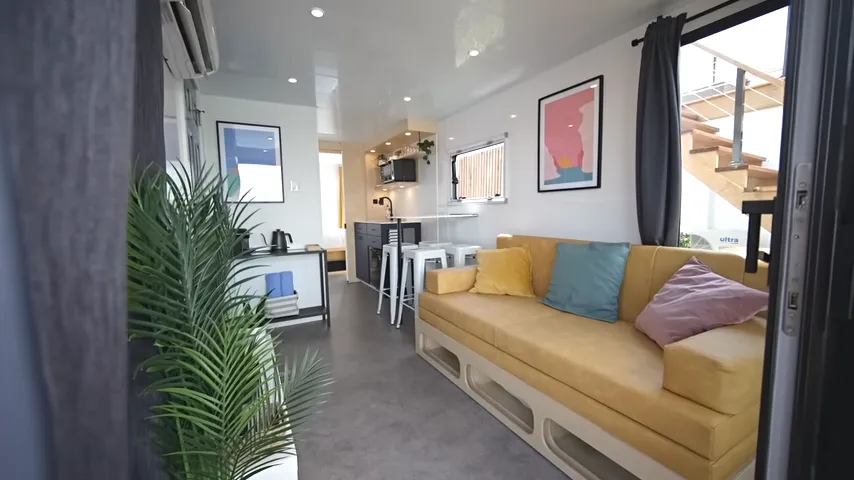
Kitchenette
The kitchenette, though small, is designed to encourage visitors to explore the local dining scene. However, it is still equipped with a small oven, fridge, and a cozy dining area that can accommodate up to four people. The bathroom, surprisingly spacious for such a compact home, features a shower, toilet, and beautiful wooden ceiling that adds a warm touch. The bedroom boasts a queen-size bed, providing a comfortable night’s sleep as the gentle sound of the waves lulls you into a peaceful slumber.
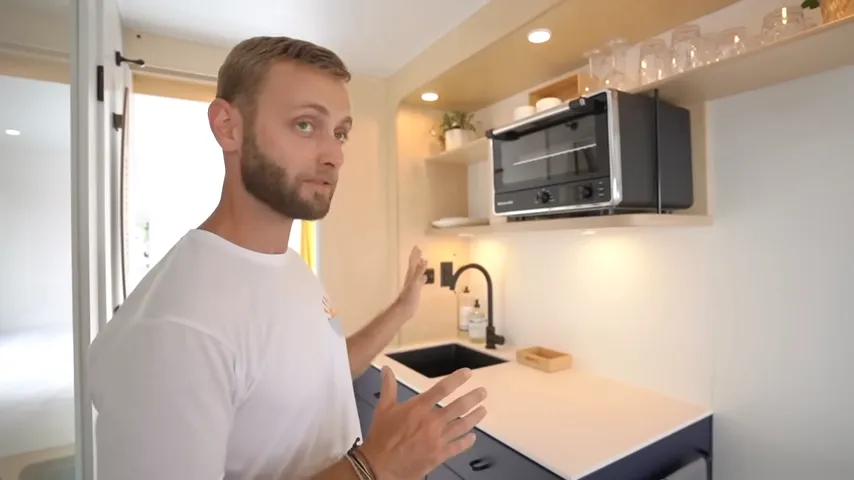
It’s hard not to fall in love with the outdoor spaces that Ovilla offers. The lower deck, accessible through the patio door, is home to a hot tub and an unparalleled view of the river. The rooftop terrace, on the other hand, boasts a seating area and bean bag chairs, making it the perfect spot to catch a sunrise or sunset.
What sets Ovilla apart from other tiny homes is its flexibility. While it currently sits atop a floating platform, the design can also be installed on a trailer with wheels or even on a traditional foundation on land.
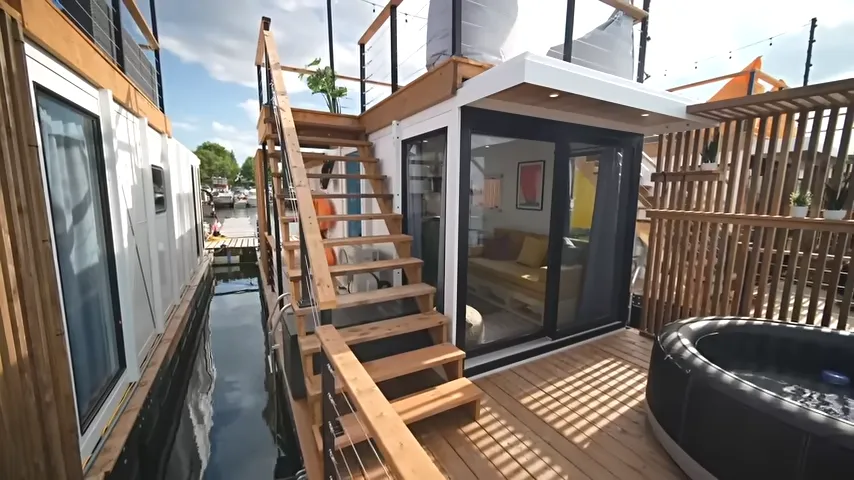
As I bid adieu to this enchanting floating abode, I couldn’t help but marvel at the ingenuity that went into its creation. Ovilla truly encapsulates the essence of a home away from home, offering a unique experience for all who have the pleasure of stepping aboard.
The floating tiny house showcased in this video demonstrates a unique and innovative design, making it an excellent example for those interested in the world of houseboats and small living spaces.
Key takeaways:
1. Flexibility in foundation options: The design of this floating tiny house allows it to be installed on three different types of foundations – a floating platform, a trailer on wheels, or a traditional foundation on land. This versatility makes it adaptable to various preferences and locations. Arthur mentions, “this house is designed to be used in different applications…you just change the foundation and you have a completely new experience.”
2. Efficient use of space: Despite its small footprint, the layout of this float home provides a spacious feeling in each room, with no loft or transforming furniture required for day-to-day living. The open floor plan and well-thought-out design make it a comfortable living space for up to four people.
3. Emphasis on outdoor living: With two large decks and a paddleboard launch area, the design of this float home takes full advantage of being on the water, providing ample opportunities for enjoying the outdoors and water activities.
4. Waste management considerations: The video highlights the importance of having a proper waste management solution in place for float homes, as managing gray and black water can be a challenge. In this particular marina, regular pump-outs are offered as a solution.
Resources mentioned:
– Bow House Habitat website: Information about their float home builds and Ovilla rentals near Montreal.
Personal best advice:
When considering a float home or houseboat project, it is essential to research local regulations and requirements for waste management, mooring, and permits. Additionally, ensure that the design is adaptable to different foundations and environments, allowing for a flexible and enjoyable living experience.
FAQ:
1. What makes this floating tiny house unique?
The flexibility in foundation options, efficient use of space, emphasis on outdoor living, and consideration of waste management make this floating tiny house stand out.
2. Can this floating tiny house be used as a full-time residence?
Yes, the house is well-insulated and can tolerate a wide range of temperatures, making it suitable for year-round living.
3. Is there a sink in the bathroom?
No, there is no sink in the bathroom, which could take some getting used to. However, the space-saving design allows for a more spacious living area.
4. How is waste managed in this float home?
The marina offers regular pump-outs to manage gray and black water, ensuring proper waste management.
5. What materials are used in the construction of this float home?
The walls of the house are made of fiberglass and foam, providing excellent insulation and durability. The deck is made of wood with PVC floats underneath.
